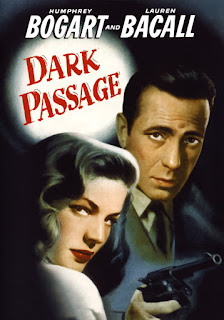Awww Gilda. My all-time favorite film and the very reason
why I love film noir. Rita Hayworth is also my favorite actress; she is the
very reason I became a redhead (like Rita, I'm a natural brunette). This
performance in particular is also my favorite both as a dance/striptease
routine and song. It never gets old for me. At the time of this film's release,
this was a very risqué performance, but it defined Rita's status as a sex
symbol.
Analysis:
Gilda was not necessarily a femme fatale in this film; she
was more a woman scorned. I've always seen Johnny Farrell more as the male
fatale who projected this onto Gilda. Hence the song choice, Put the Blame on
Mame. While he is the one essentially making trouble in their relationship by
his callous emotional abuse, she is the one punished for his misdeeds. So she
willfully accepts this role, but in doing so, she will bring Johnny down with
her. The performance is more about her embarrassing Johnny publicly. And on a
deeper level, she is highlighting the fact that she is the fall guy for
Johnny's problems. Later, when he slaps her, it's not necessarily because of
her performance, it's because she made a mockery of him; a mockery that HE is
responsible for.
During the Golden Age of Cinema, performance music was less
a backdrop of a scene and more of an integral part of the film to pay close
attention to as it was very revealing about characterization, theme and
foreshadowing events. It advanced the story more than timed-out.
The first scene in The Killers has the Nighthawks vibe where we first observe the diner encounter from the outside just as in Hopper's painting. We then move inside to witness the interaction between service staff and customers.
As we watch Nick run through the backlots to the Swede's apartment, we can see Lang's influence on some technical aspects of the shot. For example, the crane shot looking from an angle over Nick as he approaches the apartment. This mirrors the chase seen in M. At the Swede's apartment, the scene is nearly identical to Ministry of Fear. The only source of light comes from the hallway. The Swede's face remains covered much as Stephen's is before his release from the asylum. Both rooms are overtly dark to create the chiaroscuro and shadows.
Nick escapes a chaotic event in the diner to a more quiet and reflective setting at the apartment.The overall mood seems to be one of serenity and/or acceptance of the Swede's fate as he is very ho-hum about his impending doom.
Many films noir have the gangster narrative especially when a heist is pending. We see similar structures in films such as Asphalt Jungle, Du Rififi Chez le Hommes, Kansas City Confidential, Reservoir Dogs, Heat that utilize the same visual appeal as in this film particularly with a diner.
The first scene in The Killers has the Nighthawks vibe where we first observe the diner encounter from the outside just as in Hopper's painting. We then move inside to witness the interaction between service staff and customers.
As we watch Nick run through the backlots to the Swede's apartment, we can see Lang's influence on some technical aspects of the shot. For example, the crane shot looking from an angle over Nick as he approaches the apartment. This mirrors the chase seen in M. At the Swede's apartment, the scene is nearly identical to Ministry of Fear. The only source of light comes from the hallway. The Swede's face remains covered much as Stephen's is before his release from the asylum. Both rooms are overtly dark to create the chiaroscuro and shadows.
Nick escapes a chaotic event in the diner to a more quiet and reflective setting at the apartment.The overall mood seems to be one of serenity and/or acceptance of the Swede's fate as he is very ho-hum about his impending doom.
Many films noir have the gangster narrative especially when a heist is pending. We see similar structures in films such as Asphalt Jungle, Du Rififi Chez le Hommes, Kansas City Confidential, Reservoir Dogs, Heat that utilize the same visual appeal as in this film particularly with a diner.





























